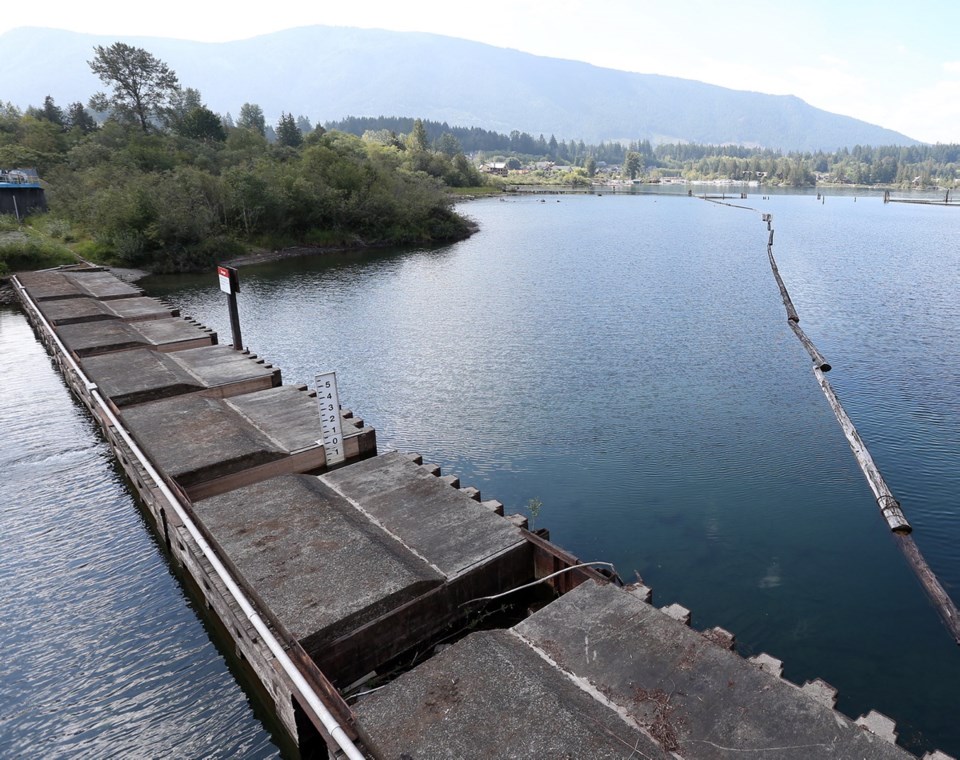It’s time for agencies to work together to see the weir raised at Cowichan Lake, says the mayor of North Cowichan.
Cowichan Valley Regional District board members will look at a proposal that would raise taxes to help pay for a higher weir, said board chairman and North Cowichan Mayor Jon Lefebure.
The regional district, Cowichan Tribes and Catalyst Paper need to partner to redevelop and operate a higher weir, he said.
Summers bring an annual nail-biting exercise as river watchers wait to see if enough rain will fall to sustain First Nations fisheries and cultural practices, 600 jobs at Catalyst Paper’s mill and recreation on one of Canada’s heritage rivers. The river also dilutes effluent from municipal treatment facilities.
“There is a dramatic change in the weather . . . and it is having a dramatic impact on that river,” said Lefebure, pointing to climate change as a factor, with decreased rainfall and water from nearby snowpack.
The weir is a manmade structure that crosses the lake, allowing water to be stored and released when needed. Catalyst, the owner and operator, built the weir in the late 1950s.
A new form of ownership is being examined, as the public looks to local government and First Nations, said Lefebure.
“Between the Cowichan Valley Regional District and the Watershed Board, we have acknowledged the long-term solution is raising the weir,” said Lefebure, who is also co-chairman of the Cowichan Watershed Board.
“It’s been talked about for a lot of years. There’s been a lot of discussion of whose responsibility is it. And I think we have come to the realization with our very strong partnership with Cowichan Tribes and also with Catalyst, that . . . we have to be involved in the solution.
Regional district board members will be considering a proposal to embark on an approval process that would permraising money through taxes for the project.
B.C.’s Community Charter allows local government to borrow money under this process as an alternative to holding a more expensive referendum. If at least 10 per cent of electors are opposed, then a referendum must be held.
Town hall meetings would be held prior to initiating the process, Lefebure said. The amount of money needed has not yet been established.
Also needed is a new storage licence for water from the province, he said. That would likely involve a partnership between the regional district, Cowichan Tribes and Catalyst.
Applications for grant money, of possibly $10 million to $15 million, will have to be submitted to the provincial and federal governments to help pay for the weir, Lefebure said.
“The only good thing in this whole scenario is that we have Cowichan Lake and therefore we have an opportunity to do something about these drastic conditions.”
Catalyst is also renting 20 pumps on a trial basis to see if drawing water from the lake could be part of a solution during a dry spell.



